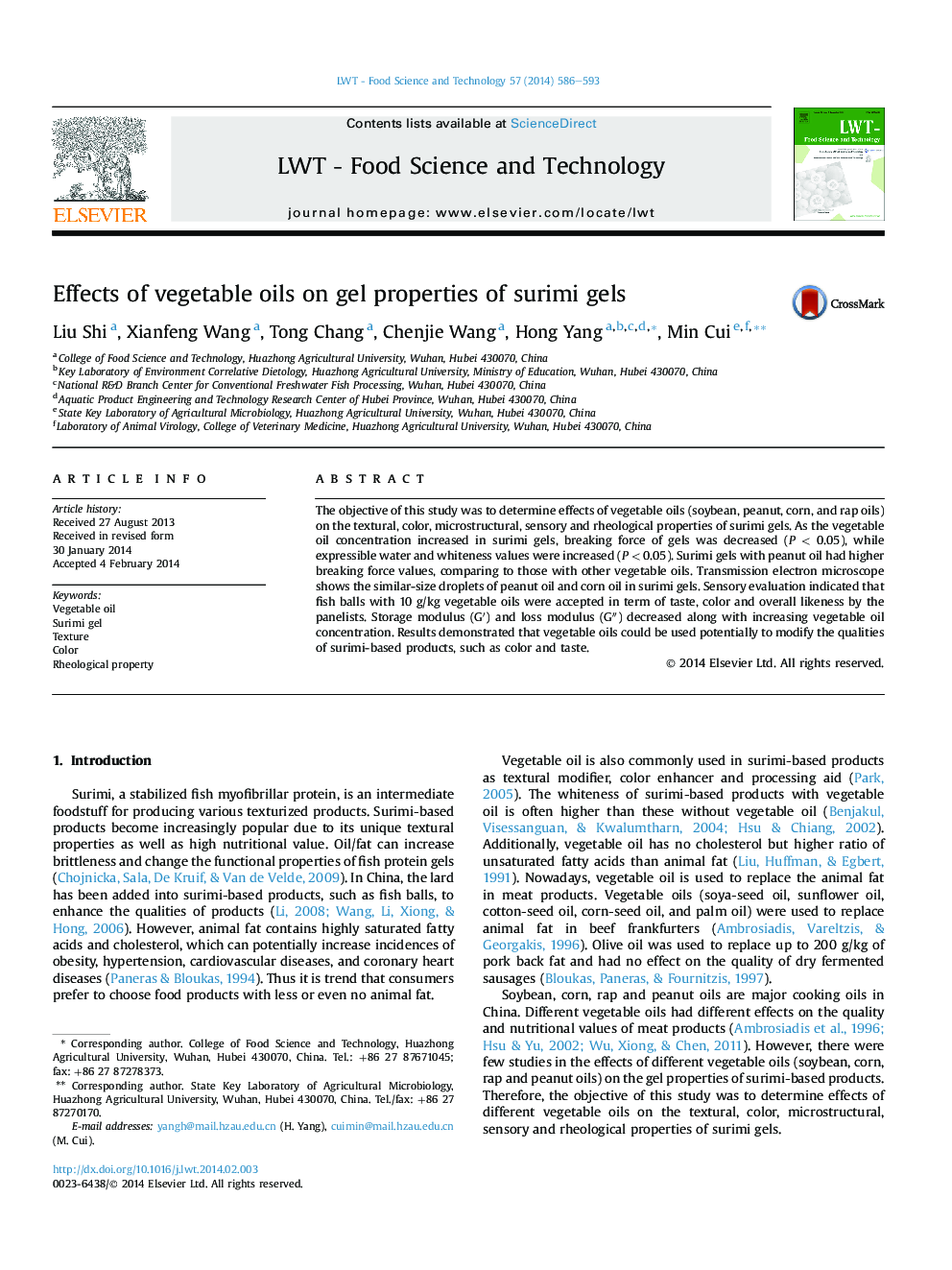| Article ID | Journal | Published Year | Pages | File Type |
|---|---|---|---|---|
| 6403387 | LWT - Food Science and Technology | 2014 | 8 Pages |
â¢As oil content increased in surimi gel, breaking force was decreased.â¢Whiteness of gels was improved as oil was added.â¢Storage and loss moduli decreased along with increasing vegetable oil contents.â¢Surimi gels with peanut oil had higher gel strength than those with other oils.
The objective of this study was to determine effects of vegetable oils (soybean, peanut, corn, and rap oils) on the textural, color, microstructural, sensory and rheological properties of surimi gels. As the vegetable oil concentration increased in surimi gels, breaking force of gels was decreased (PÂ <Â 0.05), while expressible water and whiteness values were increased (PÂ <Â 0.05). Surimi gels with peanut oil had higher breaking force values, comparing to those with other vegetable oils. Transmission electron microscope shows the similar-size droplets of peanut oil and corn oil in surimi gels. Sensory evaluation indicated that fish balls with 10Â g/kg vegetable oils were accepted in term of taste, color and overall likeness by the panelists. Storage modulus (Gâ²) and loss modulus (Gâ³) decreased along with increasing vegetable oil concentration. Results demonstrated that vegetable oils could be used potentially to modify the qualities of surimi-based products, such as color and taste.
